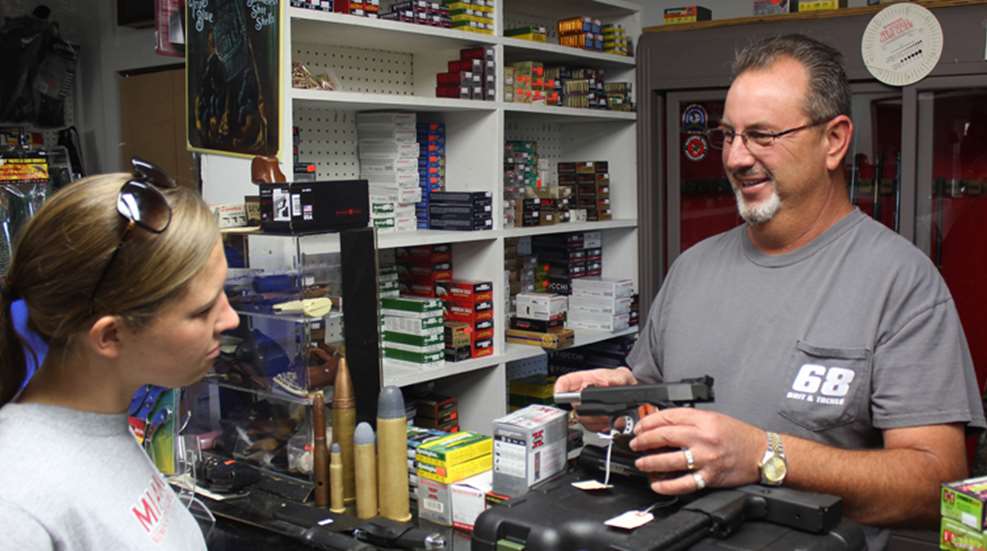
Shopping for a defensive or CCW handgun can often be a surprising event. It is surprising in that there are so many guns, with so many features, to choose from. And, too often, the salesperson will point out “custom” features that they suggest will make the gun more desirable. Well, the fact is that some of those features really are worthwhile....and others are just frosting on the cake. In fact, some of those “custom” features might even get a person hurt in a defensive situation. Here are the top three that I suggest that you avoid.
1. 3-DOT SIGHTS
These involve a white dot on the front sight and two white dots on the rear sight; one on each side of the rear aperture. It is the two dots on the rear sight that can slow you down when acquiring a defensive sight picture. Here's why I say that: It is important to focus on the front sight when breaking the shot on your intended target. Something on the front sight will help draw your eye to it, and that is a good thing. I prefer the gold bead on a front sight, but a white dot will work just fine. This is especially good for aging eyes, since older eyes have a bit of difficulty focusing and/or changing focus.
The human eye can’t focus on the target, front sight and rear sight at the same time. We should be focused on the target to make sure it is really a threat, and then focus on the front sight as we break the shot. At distances, we may align the front and rear sights, but we never focus on the rear sight. Therefore, the defensive shooter never needs anything that will attract his or her attention and focus to the rear sight.
2. EXTENDED SLIDE STOP
A real clue is when the salesperson, or local “expert,” refers to this feature as a “Slide Release.” Its job is to lock the slide open after the last shot is fired, not to be used to release the slide when the gun has been loaded and we are ready to chamber a round.
Using the shooting thumb, or support-hand index finger, to release the slide is a fine motor skill. And fine motor skills are among the first skills that we lose when we are placed under the stress of a gunfight. Under stress, we cannot completely avoid using fine motor skills, but we can, and should, minimize their use. That is, we should avoid them if there is a better way.
The proper way to charge the auto pistol is to grasp the pistol with our entire support hand on top of the slide between the ejection port and the rear sight. Grasp it and grasp it hard. Then we aggressively pull the slide all the way to the rear and let it go. This allows the full power of the pistol’s recoil spring to drive the cartridge into the chamber.
Activating the slide stop to release the slide does not use the full power of the recoil spring and using it, along with a rough or dirty chamber, may cause the cartridge to fail to seat completely in the chamber. This will cause the slide to not go completely into battery and the pistol will not fire.
3. FULL-LENGTH GUIDE ROD ON 1911 PISTOLS
Unlike some later pistols, the 1911 was not designed with a full-length guide rod. That’s the rod that sticks out under the barrel when the slide is to the rear. However, some manufacturers have started putting full-length rods in their guns because it looks custom and might make someone think they are getting something special.
The full-length guide rod on a 1911 does not perform any useful function. Some years ago, tests were run in which five 1911s were place in a machine rest. All five were shot with the full-length guide rod and then they were shot after a standard guide rod and recoil system were installed. There was no change in each of the pistols’ accuracy or reliability. Did you get that? The full-length guide rods didn’t do anything.
The 1911 pistol, in its Government Model or Commander sizes, works just fine the way that John M. Browning originally designed the gun. All the full-length guide rod does is to make a pistol that is relatively easy to disassemble more difficult to take apart. Why would anyone want that?
People who are new to the concept of personal defense are well served to seek the advice of a professional trainer when selecting the defensive handgun. Neighbors, spouses and internet “experts” may not be the best sources.






































